Reigniting the Reading Flame
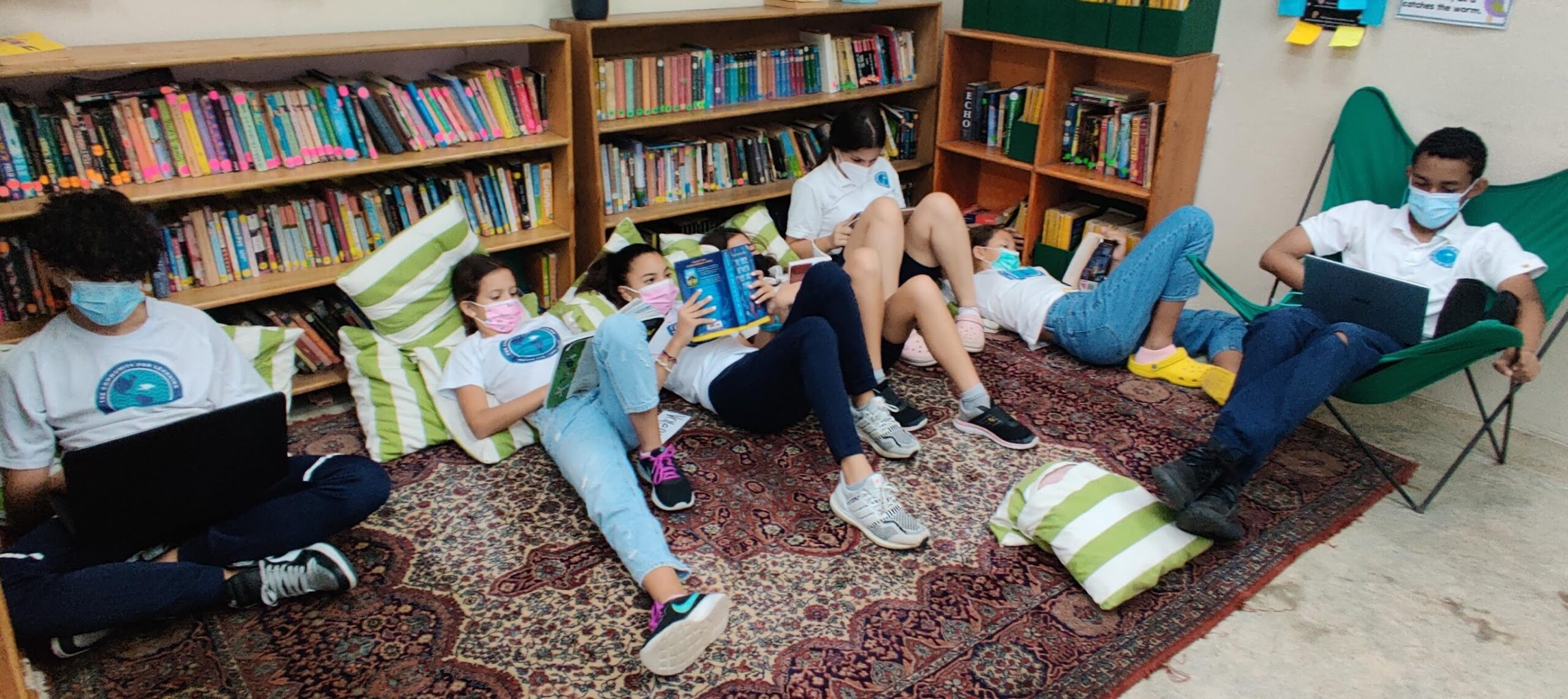
After a year and a half of remote learning, we’re finally back in the classroom and we can’t wait to spend time reading with our kids. We gather together for a read-aloud — kids relax as we open our shared reading novel and begin to read. But…. within minutes, students are fidgeting and whispering to each other. During independent reading, they’re restless, they play with pencils, they fiddle with book pages, they look at each other and giggle.
They. Can’t. Focus.
Over the pandemic, our culture of reading has all but disappeared. 4th grade teacher Laura told me, “My daughter was always an avid reader, but she lost the habit during the pandemic. If she stopped reading, I can’t even imagine how our reluctant readers are faring.”
But should we be surprised? I spent months in lockdown struggling to read, instead developing a Netflix habit. And when I did manage to read, I consumed books that I could only call “light reading” — easy beach reads that didn’t take much effort on my part. Escapism at its best.
Our students were similarly locked up at home, anxious about the future, lonely, and often bored. So of course they turned to social media, video games, and binge-watching TV shows. Which is a good thing. They survived.
But, now we need to get them back. In our school, after noticing students’ inability to focus on reading post-pandemic, teachers made it their mission to reignite the reading culture we’d lost. Here are some of the ways they did it:
Slow down to go fast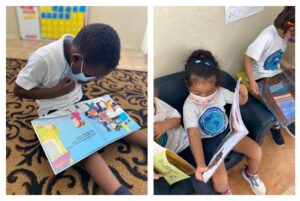
- Throughout the school, teachers shortened our usual daily reading time. From elementary through 12th grade, teachers naturally took this decision.
- Rather than our usual 20 – 30 minutes per day, they started with five minutes of reading and slowly built up.
- Teachers noticed that students simply weren’t reading at home when asked — so they moved all reading to in-class. This uses up precious class time, but teachers all say it’s worth it. The growing ability to focus on reading is spilling over into other subjects such writing and problem-solving in math.
Choice
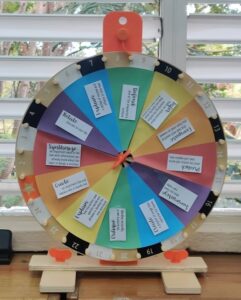
Students love to spin the independent reading wheel and answer questions.
- Teachers gave independent reading choice — allowing students to choose the genres they prefer and the reading levels they’re comfortable with. In the younger grades, they found that after remote learning, students needed much more support in finding “just right books”.
- They also gave them choice in the way they respond to their reading – through writing a review, creating flipgrid videos, acting out a scene, or simply discussing their book with a friend. We’ve always given choice in the past, but teachers tried to change it up, looking for new and interesting ways to respond. The novelty of the independent reading wheel (left) is a huge motivator.
- In our 7th grade Spanish class, students were hooked on manga, so their teacher, Pia, filled her shelves with it. Now, when reading time is over we hear, “Noooooo….” It warms our hearts!
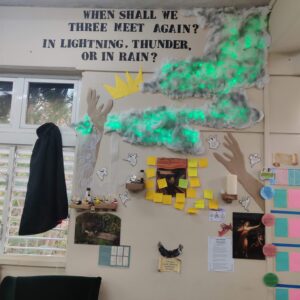 In shared reading, teachers gave students choices for the books they’d read together. In 12th grade, Omaura let them choose between Hamlet and Macbeth for a Shakespeare unit. When the students let her know that they were all passionate about their choices, and wanted to read both books, she decided to let them go for it; some students would go in depth reading their choice, Hamlet, while the others read it for pleasure, and then they would swap with some students analyzing Macbeth, while the others read along.
In shared reading, teachers gave students choices for the books they’d read together. In 12th grade, Omaura let them choose between Hamlet and Macbeth for a Shakespeare unit. When the students let her know that they were all passionate about their choices, and wanted to read both books, she decided to let them go for it; some students would go in depth reading their choice, Hamlet, while the others read it for pleasure, and then they would swap with some students analyzing Macbeth, while the others read along.
Hook ‘em
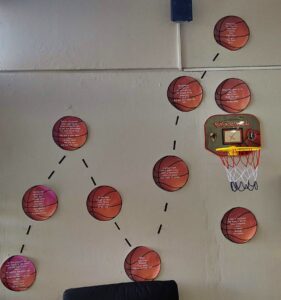
- 8th grade teacher, Angeliki, thought that the themes and main character of The Crossover by Kwame Alexander would grab all her students. At first, their reaction was, “Poetry? I hate poetry!” but as Angeliki read the first few pages aloud, they were captivated by the voices of the characters, and the writing style. Now, they’re fighting over the sequels….
- In 9th grade, Nicole decided to focus on mysteries in shared reading. When she saw that students were hooked, she ordered more mysteries for independent reading as well.
- During shared reading (all students reading the same book together) some teachers stopped allowing students to take the books home. This stoked their anticipation to read in class – the psychological effect was immediate and priceless…. kids who wouldn’t read at home before, were begging to take the books home to read.
- Teachers built curiosity around certain books by wrapping them up in brown paper, adding quotes to the front, and having students predict what the books were each about. (See more in this post.)
- While students read Thomas Creeper and the Gloomsbury Secret, author J.R. Potter Zoomed in to talk to students about his writing process. When he read aloud, kids hung on every word.
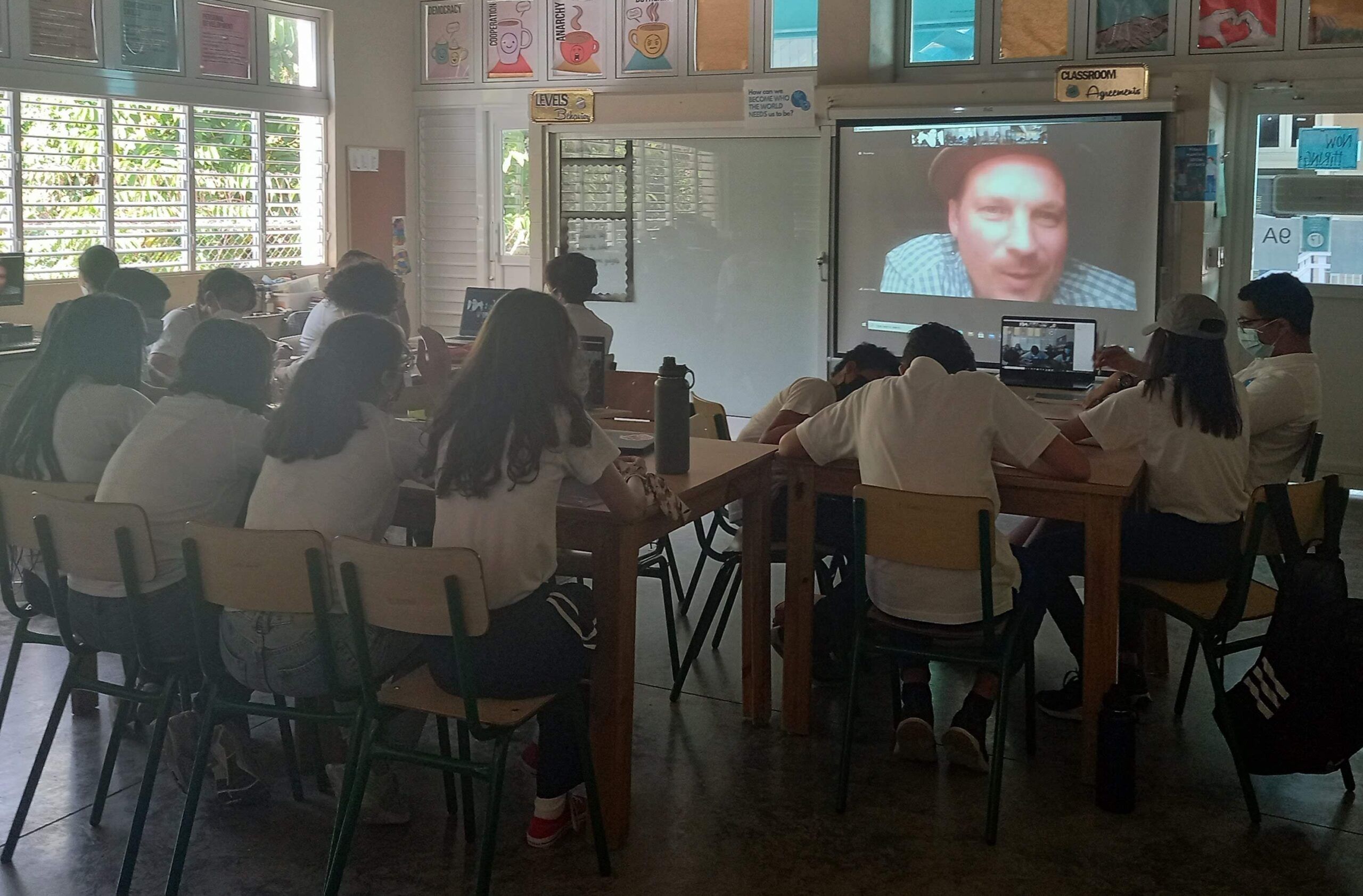
J.R. Potter, author of Thomas Creeper and the Gloomsbury Secret talks to students about his writing process.
Independent reading
- After independent reading time, teachers have students organically share their favourite lines, characters they love, or exciting moments in a book (no spoilers). Students only share if they want to, with no pressure.
- Teachers model reading by reading beside students and sharing as well.
- Teachers hold informal conferences. Squatting down beside a student, they talk about the books they’re reading. No analysis, no teacher talk, just plain sharing.
- Omaura introduced her students to books by “serving” choices at a “book tasting.” She set the classroom up as a restaurant and gave students menus of different genres. She had them “taste” book choices by flipping through the pages, reading the cover and then jotting down notes about the ones they’d like to read.
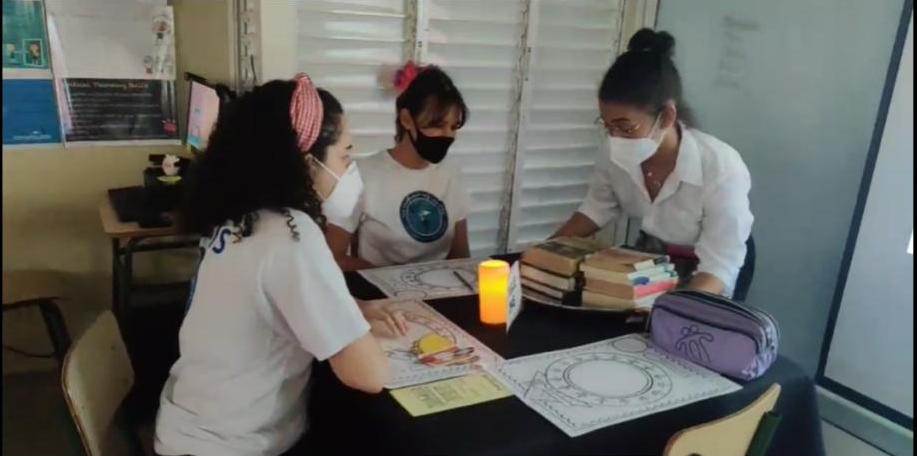
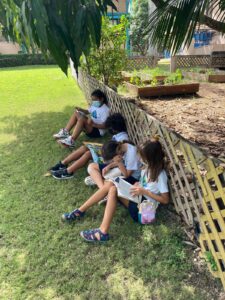
Create a reading atmosphere
- During reading time, teachers dim the lights, put on soft music (letting students choose the music), and have comfy seating available.
- Some teachers take their students outside to read — they say the kids love the change of scenery. Sitting under the trees, hearing the birds… it’s magical.
Interactive walls
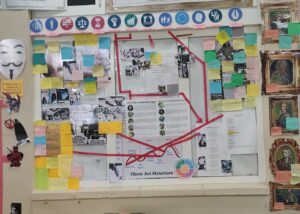
V for Vendetta interactive wall
- Teachers create thematic walls for their shared reading books. When kids come into the classroom and see the walls, their curiosity is piqued.
- The wall builds as the class reads the shared book. Students add comments, connections, analysis…. making their thinking visible.
The return of reading
It’s been five months since we returned to classrooms, and now, when I walk into a class of students reading independently, I once again hear the silent hum of happy readers. It took time. Teachers had to make reading a priority and give up other activities, but it was worth it.
Our readers are back!

Carla, I can’t tell you how much this warmed my heart. Your teachers are doing a terrific job!
Aw…thank you Betty. Coming from you, that means so much!!